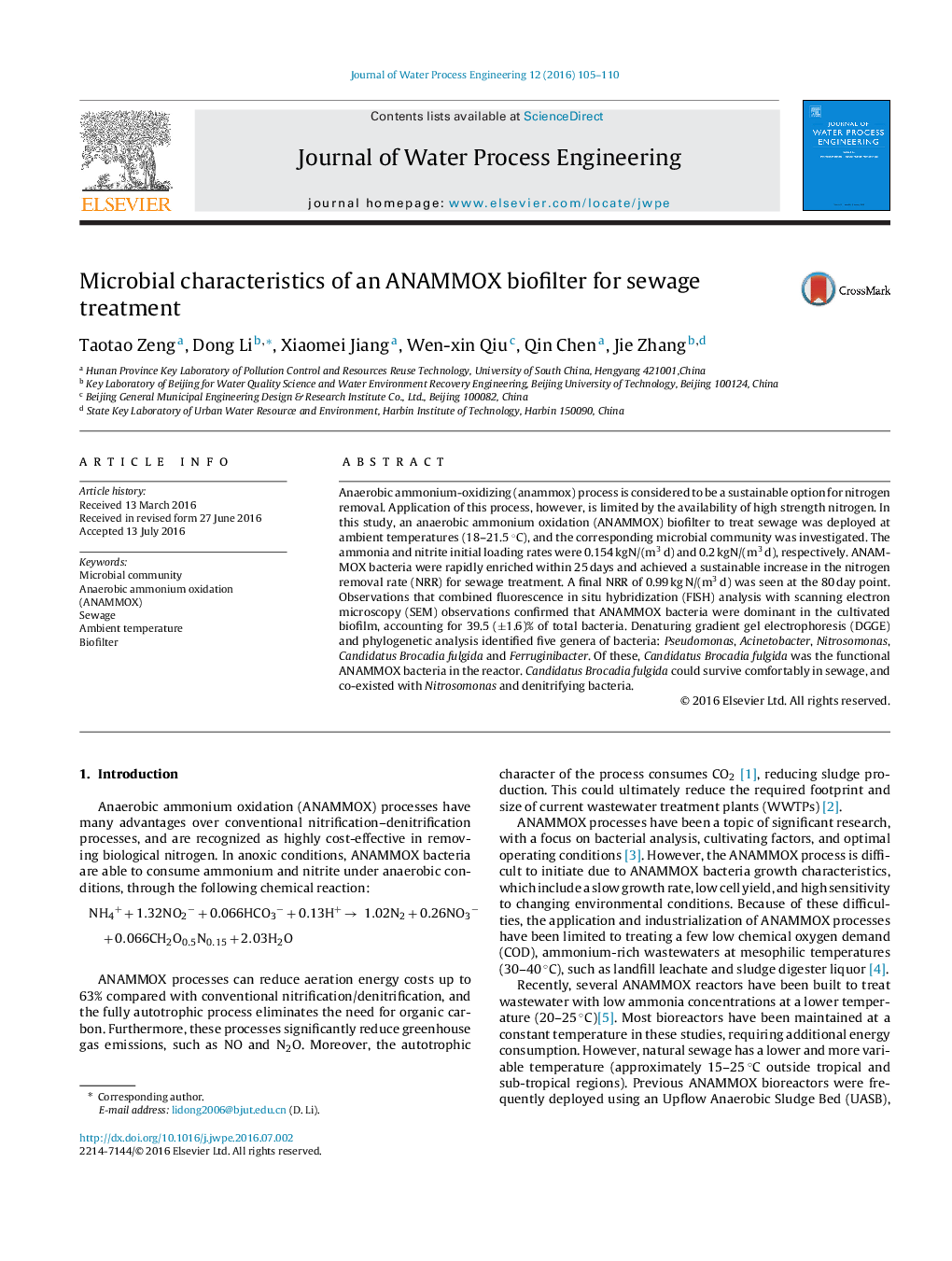| Article ID | Journal | Published Year | Pages | File Type |
|---|---|---|---|---|
| 232421 | Journal of Water Process Engineering | 2016 | 6 Pages |
Anaerobic ammonium-oxidizing (anammox) process is considered to be a sustainable option for nitrogen removal. Application of this process, however, is limited by the availability of high strength nitrogen. In this study, an anaerobic ammonium oxidation (ANAMMOX) biofilter to treat sewage was deployed at ambient temperatures (18–21.5 °C), and the corresponding microbial community was investigated. The ammonia and nitrite initial loading rates were 0.154 kgN/(m3 d) and 0.2 kgN/(m3 d), respectively. ANAMMOX bacteria were rapidly enriched within 25 days and achieved a sustainable increase in the nitrogen removal rate (NRR) for sewage treatment. A final NRR of 0.99 kg N/(m3 d) was seen at the 80 day point. Observations that combined fluorescence in situ hybridization (FISH) analysis with scanning electron microscopy (SEM) observations confirmed that ANAMMOX bacteria were dominant in the cultivated biofilm, accounting for 39.5 (±1.6)% of total bacteria. Denaturing gradient gel electrophoresis (DGGE) and phylogenetic analysis identified five genera of bacteria: Pseudomonas, Acinetobacter, Nitrosomonas, Candidatus Brocadia fulgida and Ferruginibacter. Of these, Candidatus Brocadia fulgida was the functional ANAMMOX bacteria in the reactor. Candidatus Brocadia fulgida could survive comfortably in sewage, and co-existed with Nitrosomonas and denitrifying bacteria.
